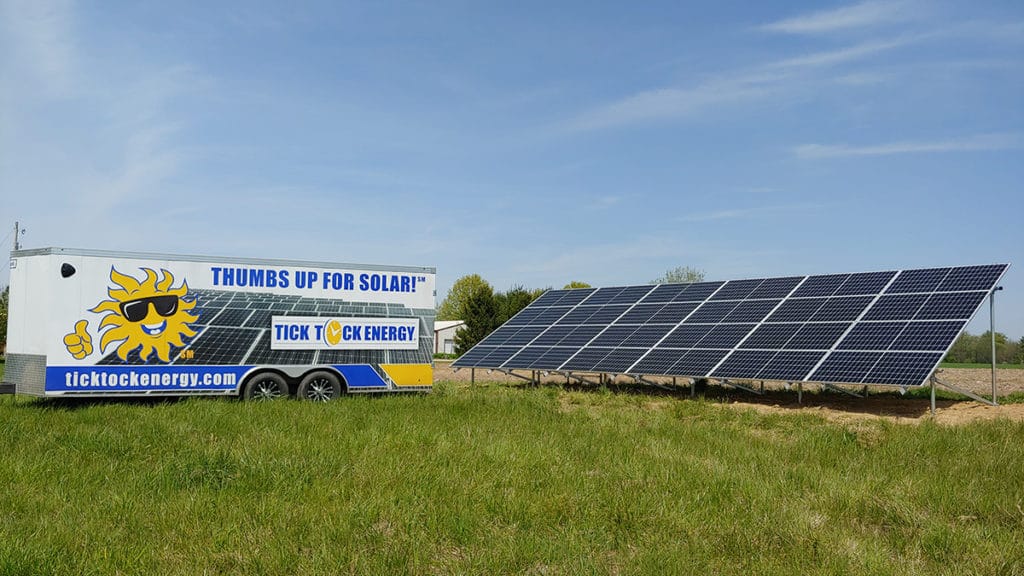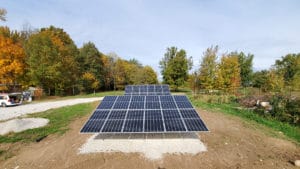
Big Increase in Ameren Illinois Electricity Bills
Ameren Illinois customers have been shocked to see the increase in their electric bills as new energy supply prices and electricity rate increases are setting in. In this blog post, we’ll address the key components of Ameren Illinois’ rate structure and what portions are increasing in price. Note: various Illinois rural and municipal customers will likely see increases eventually given the inflationary pressures but may or may not be protected in the short-term depending on how each agency absorbs energy price increases. For the purpose to keeping this article more focused we’ll address Ameren Illinois electricity market only.
Your Ameren Illinois electric bill consist of three (3) main sections:
- Supply Charges (cost of generating power)
- Delivery Charges (cost of transporting the power)
- Taxes & Fees
In recent years, most consumers were paying around $0.045 to $0.06 per kWh supply charges. Delivery charges have typically been around $0.035 to $0.05 per kWh. Taxes and fees typically add up to about $0.01 per kWh. Overall, this ratio has been around 50% supply charges, 40% delivery and 10% taxes & fees. Your bill may have been split in different percentages due to several factors, but this is a rough guide to where rates have trended the last few years based on the customer bills Tick Tock Energy has evaluated.
Ameren Illinois Electric Supply Charges
Ameren Illinois has been a deregulated electric utility shortly after electricity deregulation passed legislation in 1997. That means consumers can choose their power supplier. The supply cost of energy has quickly jumped and is the key reason for the price shock customers are noticing. Not all customers will recognize the jump in electricity supply costs equally. Many residential consumers living in a town or city may have the benefit of municipal aggregation. This is where their local city government negotiates a power supply for a short-term contract, typically one year. Unless a customer “opts-out” and remains with Ameren as the supplier or chooses their own 3rd-party supplier, they and all other community members receive power from the city’s selected power supplier for the contracted period. Commercial customers on the other hand typically take a more active role and contract with a 3rd party electric provider on a 1, 2, or 3-year contract.
The Power of Electric Rate Hedging
Locking in a supply rate is an example of hedging. This is where a consumer “bets” that the rate they lock in at will protect them long-term fluctuations in power rates. This provides peace of mind and budget predictability. In Illinois, most Ameren customer have the option to lock in for the 1 to 3-year periods but then must re-negotiate, or “shop” for a new rate when their contract comes up for renewal. This is a short-term hedge. Installing a solar array is an alternative form of hedging and essentially helps “lock-in” a stable power supply for the portion of electricity generated from the sun and used fully by the home, farm, business, or public facility.
Supply Charges Have Jumped in Illinois
Today’s power rate supply shock is occurring where customers long-term contracts have come up for renewal and now presented new rates moving forward. The jump reflects the recent market cost of electricity which has been influenced by many factors such as closure of older power plants, cost of power plant fuel (like coal, natural gas, and uranium), inflation, etc.
Throughout the summer of 2022, Tick Tock Energy has been hearing from customers that new supply rate offers are ranging from $0.08 per kWh (8 cents) up to $0.11 per kWh, or 11 cents. This represents about a 200% increase compared to the 4 to 5 cent power customers have been accustomed to over the last several years.
Not all consumers participate in deregulation, or do not live in a community with municipal aggregation, and instead just lets Ameren Illinois be the power supplier. The electric customer will then receive their supply under Ameren Illinois DS-1 (residential), or DS-2 (small commercial), or DS-3 (medium commercial) or higher rate structure. Those rate structures are determined based on Ameren’s Illinois effort to purchase large blocks of power supplies from the wholesale market. Ameren Illinois does not own power plants any longer. As part of deregulation, they were required to divest, or sell all power plants. Ameren Illinois therefore purchases power on behalf of those customers that do not wish to participate in deregulation.

Deliver Charges Likely to Rise in Illinois
The second biggest component traditionally on electric bills are delivery charges. These typically constitute about 40% of the typical electric bill. As supply rates explode, the ratio will shift and be dominated by supply costs. However, the price to deliver electricity to your home, farm, business or other facility will likely increase this year too.
Ameren Illinois recently filed with the Illinois Commerce Commission (ICC) for proposed rate changes for the electric delivery services throughout its Illinois territories. If approved, these updated rate changes take effect on the January 2023 billing period. Although the power supply portion of the bill is deregulated, it’s impractical to switch companies for delivery. Wires, transformers, meters, and other elements of the power delivery system are not easy to change and have multiple lines for different utility delivery companies (UDCs) and would be an expensive and unsightly mess! When Ameren Illinois wishes to increase delivery charges, they must petition the ICC and justify their new rate via a formal process called a rate filing.
A lengthy public notice issued by Ameren Illinois in spring 2022 announced a rate filing for increasing delivery charges.
For DS-1 Residential Delivery Services, the proposed increase in electric delivery charges and the electric distribution tax (EDT) proposed to raise electric rates to by 7.5 percent. Delivery charges have typically been about 40% of the total bill and a 7.5% increase only impacts that portion plus a part of the tax. This does not mean overall bill will go up 7.5%. This really means this increase would have about a 3% effective increase to the overall “old” bill. As supply charges consume a greater part of the bill, a smaller increase in delivery charges will have less impact. This is not to diminish the impact of this increase but provide full context.
According to the Ameren Public Notes Filing, the proposed rate changes are estimated to increase as follows:
- For a residential customer using 5,000 kWh annually (or average of 417 kWh monthly), the effect of the delivery service bill changes being proposed by the Ameren Illinois produces an average monthly increase of $1.80.
- For a residential customer using 10,000 kWh annually (or an average of 833 kWh monthly), the effect of the delivery service bill changes being proposed by the Ameren Illinois produces an average monthly increase of $3.58.
- For a residential customer using 18,000 kWh annually (or an average of 1,500 kWh monthly), the effect of the delivery service bill changes being proposed by the Ameren Illinois produces an average monthly increase of $5.36.
According to the same Ameren Public Notes filing mentioned above, the proposed changes in electric delivery service and EDT cost recovery revenue are as follows:
- DS-2, Small General Delivery Service, 8.6 percent increase.
- DS-2, Small General Delivery Service, 8.6 percent increase.
- DS-2, (Optional Charges), Small General Delivery Service, 10.5 increase.
- DS-3 General Delivery Service, 10.9 percent increase.
- DS-4 General Delivery Service, 8.2 percent increase.
- DS-5 Lighting Service, 12.4 percent increase.
- DS-6, Temperature Sensitive Delivery Service, 12.3 percent increase.
Improvements to Ameren Illinois’ Electric Grid
This filing also requires Ameren Illinois to invest $625 million in modernizing their electric system over a ten-year period. This will potentially add 450 new jobs during the peak program year, and hopefully increase energy reliability, reduce outage durations, and provide better service to customers. If these standards are not met by Ameren Illinois, the company potentially face financial penalties for these violations.
Customers should be advised the ICC can change electric rates or conditions of service after hearings are concluded. The Commission may decide to increase or decrease energy rates by amounts that had not been previously proposed by Ameren Illinois.
Are High Electricity Rates in Illinois the “New Normal”?
With exploding wholesale power prices, a potentially higher cost of electricity delivery, and of course taxes and fees, all signs point to a big jump in electricity costs. Electric rates have been stable and relatively low for many years. Those days may be long gone. In the highly inflationary period of the 1970s, average electricity prices in the United States averaged 17% year-after-year increase for over 10 years. Will we return to see similar or worse in the years ahead? Time will only tell. In the meantime, we encourage you call Tick Tock Energy and consider solar power, energy monitoring and take other measures to boost your energy efficiency and lower use. It’s important now more than ever to investigate solar energy to reduce electric consumption and potentially cut electric costs during these difficult times.
Are you interested in starting your path towards energy independence and peace of mind with a long-lasting solar installation? Time is ticking away, act today! Get a free custom solar quote for your farm, home, or business by calling Tick Tock Energy at (217) 994-9020.


